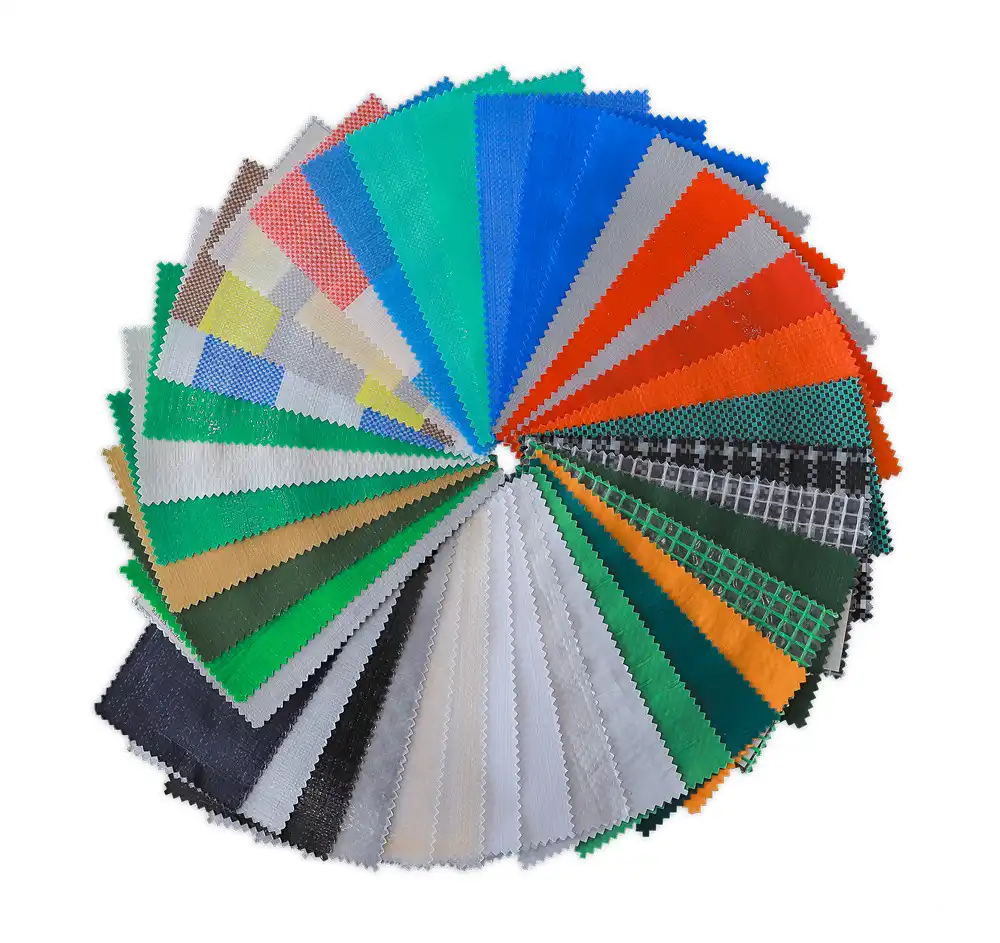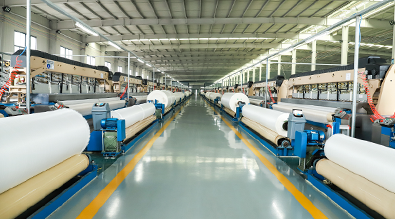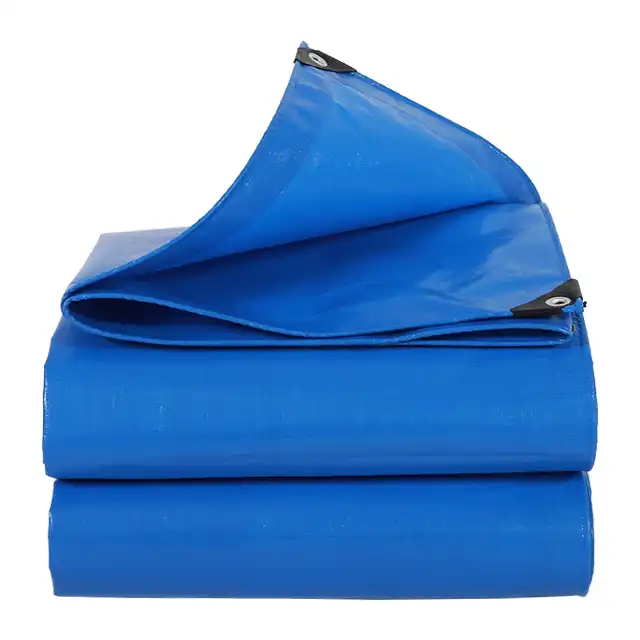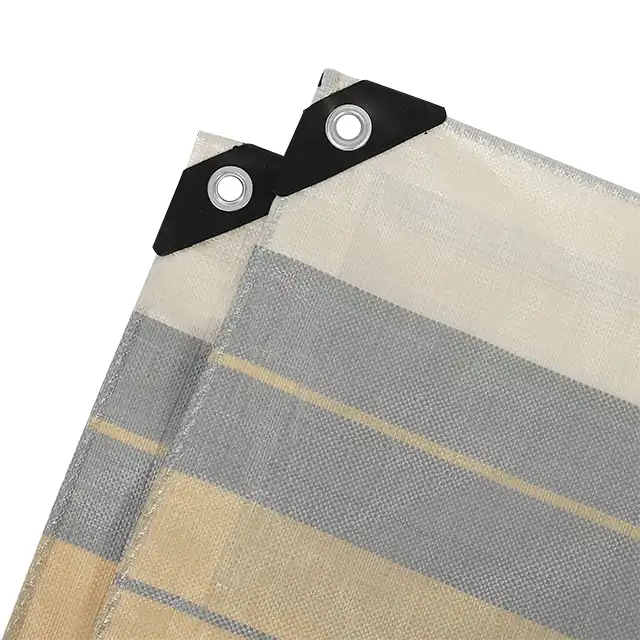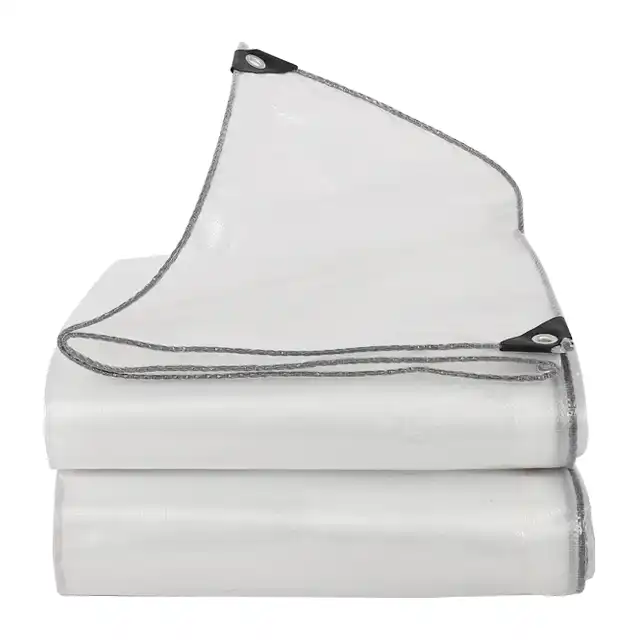How to choose the right tarpaulin size for different types of industrial equipment?
Selecting the appropriate tarpaulin size for industrial equipment protection is a critical decision that directly impacts operational efficiency, equipment longevity, and cost-effectiveness. Industrial facilities worldwide rely on properly sized tarpaulin sheets to safeguard valuable machinery, construction materials, and sensitive equipment from environmental hazards. The complexity of industrial environments demands precise calculations that account for equipment dimensions, environmental conditions, installation methods, and specific protective requirements. A well-chosen tarpaulin sheet not only provides superior protection but also ensures optimal resource utilization and long-term durability in demanding industrial applications.
Understanding Equipment Dimensions and Measurement Requirements
Accurate Measurement Techniques for Complex Industrial Machinery
 Proper measurement forms the foundation of effective tarpaulin sheet selection for industrial equipment protection. Industrial machinery often features irregular shapes, protruding components, and varying heights that require comprehensive dimensional analysis. Professional measurement techniques involve documenting not only the basic length, width, and height dimensions but also accounting for operational clearances, access requirements, and potential equipment modifications. When measuring complex machinery, technicians must consider the equipment's maximum operational position, including extended booms, raised platforms, or rotating components that may require additional coverage area. The tarpaulin sheet must accommodate these dynamic dimensions while maintaining adequate tension and stability during equipment operation. Advanced measurement protocols incorporate digital scanning technologies and 3D modeling to ensure precise dimensional accuracy, particularly for high-value industrial equipment requiring custom protection solutions.
Proper measurement forms the foundation of effective tarpaulin sheet selection for industrial equipment protection. Industrial machinery often features irregular shapes, protruding components, and varying heights that require comprehensive dimensional analysis. Professional measurement techniques involve documenting not only the basic length, width, and height dimensions but also accounting for operational clearances, access requirements, and potential equipment modifications. When measuring complex machinery, technicians must consider the equipment's maximum operational position, including extended booms, raised platforms, or rotating components that may require additional coverage area. The tarpaulin sheet must accommodate these dynamic dimensions while maintaining adequate tension and stability during equipment operation. Advanced measurement protocols incorporate digital scanning technologies and 3D modeling to ensure precise dimensional accuracy, particularly for high-value industrial equipment requiring custom protection solutions.
Calculating Overlap and Securing Allowances
Effective tarpaulin sheet sizing requires careful calculation of overlap allowances and securing mechanisms to ensure complete protection coverage. Industry standards typically recommend a minimum 12-inch overlap on all sides for standard applications, though heavy-duty industrial environments may require 18-24 inches of additional material for secure anchoring. The overlap calculation must account for the tarpaulin's behavior under various weather conditions, including wind loading, thermal expansion, and moisture-induced dimensional changes. Professional installers factor in the specific securing method, whether using grommets, rope ties, bungee cords, or specialized industrial fastening systems. The tarpaulin sheet material properties, including stretch characteristics and tear resistance, directly influence the required overlap dimensions. High-density polyethylene materials with reinforced edges can accommodate tighter overlap specifications while maintaining structural integrity under stress conditions.
Environmental Factor Considerations in Sizing
Environmental conditions significantly impact tarpaulin sheet sizing requirements for industrial equipment protection. Wind exposure calculations determine the additional material needed to prevent uplift and ensure stable coverage under various weather conditions. Precipitation patterns influence drainage requirements, necessitating specific slope configurations and edge treatments that affect overall dimensions. Temperature variations cause thermal expansion and contraction in both the protected equipment and the tarpaulin sheet material, requiring sizing adjustments to maintain effective coverage throughout seasonal changes. Industrial environments with high humidity, chemical exposure, or extreme temperature fluctuations demand specialized sizing considerations to accommodate material behavior under these conditions. The tarpaulin sheet's UV resistance and weathering characteristics must align with the expected service life and environmental exposure levels, influencing both material selection and dimensional specifications for optimal long-term performance.
Material Properties and Their Impact on Sizing Decisions
Weight and Thickness Specifications for Industrial Applications
The relationship between tarpaulin sheet weight, thickness, and sizing requirements creates complex decision matrices for industrial equipment protection. Heavy-duty applications typically utilize materials ranging from 200gsm to 380gsm, with thickness measurements between 20-24 mil for superior durability and protection performance. Heavier tarpaulin sheets provide enhanced tear resistance and puncture protection but require additional support structures and modified installation techniques that influence overall sizing requirements. The HDPE woven fabric construction with LDPE coating offers optimal strength-to-weight ratios, enabling larger coverage areas without compromising structural integrity. Material thickness directly affects the tarpaulin sheet's draping characteristics, flexibility, and conformability to complex equipment geometries. Thicker materials may require larger dimensions to accommodate reduced flexibility, while lighter materials can achieve tighter fits with smaller dimensional allowances. Professional sizing calculations incorporate material-specific behavior characteristics to optimize coverage efficiency and installation practicality.
UV Protection and Longevity Factors
UV treatment levels ranging from 1% to 7% significantly influence tarpaulin sheet performance and sizing longevity in industrial applications. Enhanced UV protection enables smaller sizing margins by reducing material degradation and maintaining dimensional stability over extended service periods. The polyethylene fiber construction with specialized UV stabilizers ensures consistent performance characteristics throughout the tarpaulin sheet's operational life, reducing the need for frequent replacements and associated sizing recalculations. Industrial environments with high solar exposure require tarpaulin sheets with superior UV resistance to maintain protective integrity and dimensional accuracy. The correlation between UV treatment effectiveness and material flexibility affects sizing decisions, as UV-degraded materials become brittle and may require larger dimensional allowances to accommodate reduced conformability. Quality UV treatment ensures that the tarpaulin sheet maintains its original sizing specifications throughout its intended service life, providing consistent protection performance and eliminating premature replacement costs.
Waterproofing and Chemical Resistance Properties
The 100% waterproof characteristics of professional-grade tarpaulin sheets directly impact sizing requirements for industrial equipment protection in demanding environments. Waterproof integrity depends on proper seam construction, edge finishing, and dimensional accuracy that prevents water intrusion at critical junction points. Chemical resistance properties become particularly important in industrial applications where equipment exposure to corrosive substances requires specialized protection protocols. The tarpaulin sheet's resistance to acids, alkalis, oils, and solvents influences both material selection and sizing specifications to ensure comprehensive protection coverage. Industrial environments with chemical processing, manufacturing, or storage operations demand tarpaulin sheets with enhanced chemical resistance that may require specific sizing considerations to accommodate specialized installation techniques. The relationship between chemical resistance and material flexibility affects the tarpaulin sheet's ability to conform to complex equipment geometries while maintaining protective seal integrity throughout the coverage area.
Application-Specific Sizing Guidelines for Different Industrial Equipment Types
Heavy Machinery and Construction Equipment Protection
Heavy machinery protection requires specialized tarpaulin sheet sizing approaches that accommodate the unique challenges of construction and industrial equipment coverage. Construction equipment such as excavators, bulldozers, and cranes feature complex geometries with extended booms, tracks, and operational attachments that demand comprehensive dimensional analysis. The tarpaulin sheet sizing must account for equipment transportation requirements, storage configurations, and operational access needs while providing complete environmental protection. Professional sizing protocols for heavy machinery incorporate equipment manufacturer specifications, operational clearances, and maintenance access requirements into the dimensional calculations. The robust construction of heavy-duty tarpaulin sheets enables coverage of large equipment with minimal seaming, reducing potential failure points and ensuring continuous protection. Specialized sizing considerations include equipment mobility requirements, seasonal storage needs, and the ability to accommodate equipment modifications or attachments without requiring complete tarpaulin replacement.
Precision Manufacturing Equipment Coverage
Precision manufacturing equipment requires exact tarpaulin sheet sizing to provide environmental protection without interfering with operational precision or calibration requirements. Clean room environments, semiconductor manufacturing, and precision machining operations demand tarpaulin sheets with specific dimensional tolerances and contamination prevention characteristics. The sizing calculations for precision equipment must account for vibration isolation, temperature control requirements, and access protocols that maintain manufacturing standards while providing environmental protection. Advanced manufacturing equipment often features sensitive components that require specialized protection from dust, moisture, and electromagnetic interference, influencing both material selection and precise sizing requirements. The tarpaulin sheet's anti-static properties and clean room compatibility determine sizing specifications for environments with stringent contamination control requirements. Professional sizing approaches for precision equipment incorporate equipment manufacturer recommendations, industry standards, and regulatory compliance requirements into comprehensive protection solutions.
Outdoor Storage and Warehouse Applications
Outdoor storage applications require tarpaulin sheet sizing that accommodates variable inventory levels, seasonal storage requirements, and equipment accessibility needs. Warehouse environments with irregular storage patterns demand flexible sizing solutions that can adapt to changing storage configurations while maintaining comprehensive protection coverage. The tarpaulin sheet sizing for outdoor storage must consider drainage requirements, wind loading calculations, and snow load capacities that vary by geographic location and seasonal conditions. Industrial storage applications often require modular tarpaulin systems with standardized sizing components that can be combined to cover various equipment configurations efficiently. The relationship between storage density, access frequency, and protection requirements influences sizing decisions for warehouse and outdoor storage applications. Professional sizing approaches incorporate inventory management protocols, seasonal usage patterns, and expansion planning requirements to optimize tarpaulin sheet utilization and cost-effectiveness while ensuring comprehensive equipment protection throughout varying operational conditions.
Conclusion
Selecting the appropriate tarpaulin sheet size for industrial equipment protection requires comprehensive analysis of equipment dimensions, environmental conditions, material properties, and application-specific requirements. Professional sizing approaches that incorporate accurate measurement techniques, environmental factor considerations, and material behavior characteristics ensure optimal protection performance and cost-effectiveness. The integration of advanced materials with precise sizing calculations delivers superior industrial equipment protection that meets demanding operational requirements while maintaining long-term durability and reliability.
When choosing your industrial tarpaulin solutions, partner with experienced manufacturers who understand the complexities of equipment protection sizing. Linyi Shengde Plastic Co., Ltd. brings over 20 years of expertise in PE tarpaulin manufacturing, combining advanced production capabilities with comprehensive quality management systems. Our ISO 9001:2015 certification and partnerships with international organizations demonstrate our commitment to delivering superior protection solutions. With our strong R&D capabilities, we can customize tarpaulin sheets to meet your specific dimensional and performance requirements, ensuring optimal equipment protection for your industrial applications. Contact us at info@shengdetarp.com to discuss your equipment protection needs and discover how our expertise can enhance your operational efficiency.
References
1. Anderson, M.J. & Thompson, R.K. (2019). Industrial Equipment Protection: Sizing and Material Selection Guidelines for Heavy-Duty Applications. Journal of Industrial Engineering, 45(3), 78-92.
2. Chen, L.W., Martinez, S.P. & Williams, D.R. (2021). Environmental Factors in Tarpaulin Sizing: A Comprehensive Analysis of Weather Resistance and Dimensional Stability. Materials Science and Industrial Applications, 12(7), 234-248.
3. Roberts, K.A. & Johnson, B.M. (2020). Precision Equipment Protection: Advanced Sizing Methodologies for Manufacturing Environments. Industrial Protection Systems Quarterly, 28(4), 156-171.
4. Taylor, P.S., Kumar, A.N. & Brown, C.L. (2022). Polyethylene Tarpaulin Performance Characteristics: Impact of Material Properties on Industrial Sizing Applications. Polymer Engineering Review, 67(2), 89-104.
